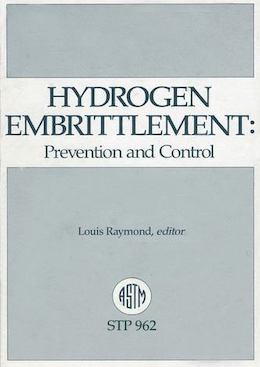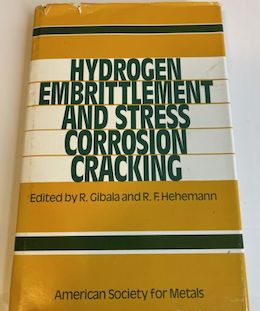
Curated with aloha by
Ted Mooney, P.E. RET

The authoritative public forum
for Metal Finishing 1989-2025

-----
Hydrogen measurement techniques for high strength steels
March 31, 2008
Hello everyone
I'm wondering who out there may be doing low level measurement of hydrogen in high strength steels. Anyone? By low level I mean low ppm levels. End goal would be to be able to predict notch tensile results or even eventually replace notch tensile testing.
thanks
Chemist - Auburn, Washington
April 2, 2008
There are a couple of companies that sell that type of equipment. It is expensive and I have never seen any data on reproducibility.
From lectures that I have heard, it did not appear to be a robust piece of equipment and did not look simple to run or maintain. This is a number or years old memory, so things could be better now.
I doubt if you will see it replace notch bar testing because that has been the accepted standard for a very long time.
- Navarre, Florida
I've been involved in mechanical plating for 30 years, and mechanical plating has been well-established as a hydrogen-embrittlement-free process for nearly six decades, so I've had a lot of exposure to hydrogen embrittlement issues. Your query seems to presuppose that (1) notch tensile testing is capable of predicting hydrogen embrittlement failures and (2) measurement of hydrogen levels in high strength steels is capable of predicting hydrogen embrittlement failures. I don't think either of these is true. If hydrogen embrittlement is an issue, then (for many applications) there are a number of suppliers who provide embrittlement-free processes including mechanical plating and dip-spin and dip-drain painting. You might check out such reference books as ASTM STP 962, "Hydrogen Embrittlement: Prevention and Control"
⇦[this on
Amazon
or
on AbeBooks affil links], edited by Louis Raymond.
and "Hydrogen Embrittlement: Prevention and Control"
⇦[this on
Amazon
or
on AbeBooks affil links], edited by R. Gibala and R. F. Hehemann (ASM).

Tom Rochester
CTO - Jackson, Michigan, USA
Plating Systems & Technologies, Inc.

April 8, 2008
April 12, 2008
As Ted observed recently in another thread, the hydrogen will diffuse out naturally - the damage is done relatively quickly by the initial presence of the hydrogen, before it diffuses out.
If the initial level was not very high (below around 8 parts per million by weight) there will not be much damage done. Higher levels cause more damage, and higher strength steels suffer more from any given hydrogen content. But measuring the hydrogen content days later is of no use - the content after that time gives no indication of the original content or the extent of any persistent damage that has been done to mechanical properties.
Irrespective of the initial content (whether it is in the steel when it first freezes when cast, or is introduced by a plating or pickling reaction), the hydrogen will diffuse out until the remaining level is around 2.7-3.0 parts per million by weight.
Because of the ready diffusion, there are substantial sampling problems involved when the actual level is to be measured. The steel needs to be quenched into acetone
⇦ this on
eBay
or
Amazon
[affil links] Warning! highly Flammable!
maintained at dry ice temperature
(around -78 °C or -108 °F) at the moment of sampling and then maintained at that temperature (or lower) until the moment the sample goes into the measuring instrument.

Bill Reynolds [deceased]
consultant metallurgist - Ballarat, Victoria, Australia
We sadly relate the news that Bill passed away on Jan. 29, 2010.
Q, A, or Comment on THIS thread -or- Start a NEW Thread


